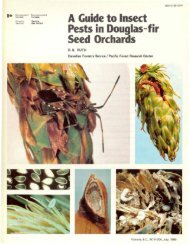decay of aspen and balsam poplar in alberta - Canadian Forest ...
decay of aspen and balsam poplar in alberta - Canadian Forest ...
decay of aspen and balsam poplar in alberta - Canadian Forest ...
You also want an ePaper? Increase the reach of your titles
YUMPU automatically turns print PDFs into web optimized ePapers that Google loves.
Conversion <strong>of</strong> biomass <strong>in</strong>to energy <strong>and</strong> chemicals<br />
The advantage <strong>of</strong> consider<strong>in</strong>g Alberta's <strong>aspen</strong><strong>balsam</strong><br />
<strong>poplar</strong> <strong>in</strong>ventory as a source <strong>of</strong> biomass is that all<br />
available wood biomass would be utilized regardless <strong>of</strong><br />
the presence <strong>and</strong> extent <strong>of</strong> <strong>decay</strong> <strong>in</strong> the wood. All<br />
cellulose materials-bole, bark, branches <strong>and</strong> twigs,<br />
foliage, <strong>and</strong> roots-can be converted to energy<br />
(Silversides 1980). Biomass harvest<strong>in</strong>g for energy<br />
means be<strong>in</strong>g able to low-grade the forest, leav<strong>in</strong>g the best<br />
trees for conventional forest products. The best har<br />
vest<strong>in</strong>g system is complete clear-cutt<strong>in</strong>g to improve<br />
stock<strong>in</strong>g, rapid growth, <strong>and</strong> natural th<strong>in</strong>n<strong>in</strong>g. Arguments<br />
aga<strong>in</strong>st use <strong>of</strong> biomass for energy purposes were outl<strong>in</strong>ed<br />
by Kennedy (1980), who claimed that l<strong>and</strong> assembly,<br />
soil depletion through short rotations, <strong>and</strong> common<br />
sense economics make hardwood energy plann<strong>in</strong>g unat<br />
tractive.<br />
With the abundance <strong>of</strong> natural gas, oil, <strong>and</strong> espe<br />
cially coal <strong>in</strong> Alberta <strong>and</strong> British Columbia, ethanol can<br />
be manufactured more efficiently <strong>and</strong> cheaply from<br />
natural gas than from wood. It is therefore uneconomical<br />
to make wood sugar from hardwoods <strong>and</strong> then ferment it<br />
to ethanol.<br />
Cattle feed<br />
Steamed <strong>poplar</strong> chips have good digestibility <strong>and</strong><br />
provide an energy component to cattle feed. The <strong>aspen</strong>-<br />
1. A significant amount <strong>of</strong> early advanced <strong>decay</strong> is<br />
<strong>in</strong>herent <strong>in</strong> <strong>aspen</strong> <strong>and</strong> <strong>balsam</strong> <strong>poplar</strong> <strong>in</strong> Alberta <strong>and</strong><br />
is caused ma<strong>in</strong>ly by Phell<strong>in</strong>us tremulae.<br />
2. Very little <strong>in</strong>formation is available on <strong>decay</strong> <strong>of</strong><br />
<strong>balsam</strong> <strong>poplar</strong> compared to that <strong>of</strong> <strong>aspen</strong>.<br />
3. Various <strong>decay</strong> loss studies <strong>in</strong>dicate that the amount<br />
<strong>of</strong> <strong>decay</strong> <strong>in</strong>creases with age, although reported<br />
figures are varied.<br />
' 4. Each clone seems to have its own <strong>decay</strong> pattern,<br />
which is less <strong>in</strong>fluenced by site or age.<br />
5. External <strong>in</strong>dicators such as conks, large stem scars,<br />
1. The identification <strong>and</strong> mapp<strong>in</strong>g <strong>of</strong> <strong>decay</strong>-free clones<br />
<strong>in</strong> accessible <strong>aspen</strong> <strong>and</strong> <strong>balsam</strong> <strong>poplar</strong> st<strong>and</strong>s <strong>in</strong><br />
Alberta are important <strong>and</strong> should have high priority.<br />
2. Any <strong>aspen</strong> or <strong>balsam</strong> <strong>poplar</strong> improvement program<br />
should <strong>in</strong>clude the degree <strong>of</strong> clonal <strong>decay</strong> resistance<br />
<strong>poplar</strong> <strong>in</strong>ventory is a potential emergency silo for Alberta<br />
cattle (Kennedy 1980). There appears to be some<br />
problem with mycotox<strong>in</strong>s, however, which requires<br />
further study.<br />
CONCLUSIONS<br />
RECOMMENDATIONS<br />
17<br />
For this use, <strong>decay</strong> should not have much conse<br />
quence, although no report has been found that piscusses<br />
the food value <strong>of</strong> the <strong>decay</strong>ed part <strong>of</strong> the wood.<br />
Cultivation <strong>of</strong> edible mushrooms<br />
Biomass <strong>of</strong> <strong>aspen</strong> <strong>and</strong> <strong>balsam</strong> <strong>poplar</strong> can be utilized<br />
to cultivate edible mushrooms such as oyster mushroom<br />
(Pleurotus ostreatus), the commonly cultivated mushroom<br />
(Agaricus bisporus), <strong>and</strong> Nameko (Pholiota<br />
nameko).<br />
The presence <strong>of</strong> advanced <strong>and</strong> <strong>in</strong>cipient <strong>decay</strong><br />
should not significantly affect mushroom production if<br />
sterilized sawdust or wood chips are used. If unsterilized<br />
logs are used to cultivate mushrooms, the presence <strong>of</strong><br />
other microorganisms <strong>in</strong> the wood, <strong>in</strong>clud<strong>in</strong>g <strong>decay</strong><br />
fungi, will affect the growth <strong>and</strong> yield <strong>of</strong> the mushrooms.<br />
<strong>and</strong> rotten knots can be used to predict the presence<br />
<strong>of</strong> advanced <strong>decay</strong> but cannot be used to estimate<br />
the extent <strong>of</strong> <strong>decay</strong>.<br />
6. Clone by clone predictions can be made by fell<strong>in</strong>g<br />
<strong>and</strong> exam<strong>in</strong><strong>in</strong>g several trees for the presence <strong>and</strong><br />
amount <strong>of</strong> <strong>decay</strong>.<br />
7. Decay appears to be less <strong>of</strong> a limit<strong>in</strong>g factor when<br />
consider<strong>in</strong>g utilization <strong>of</strong> <strong>poplar</strong> as biomass for<br />
energy conversion <strong>and</strong> cattle feed. Intensive<br />
research <strong>and</strong> development efforts are needed to<br />
make these options viable <strong>in</strong> Alberta.<br />
as an important selection criterion.<br />
3. Research <strong>in</strong>volv<strong>in</strong>g the utilization <strong>of</strong> various compo<br />
nents from trees with a significant amount <strong>of</strong><br />
advanced <strong>decay</strong> should be encouraged. For<br />
example, research <strong>in</strong>volvirig extractable cellulose


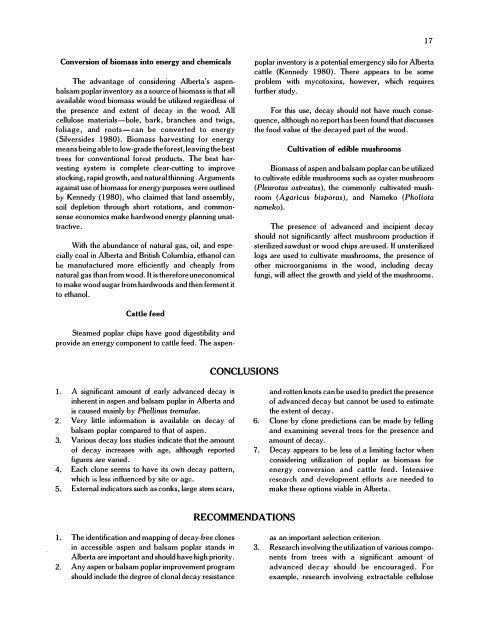
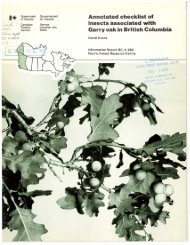
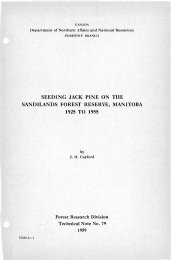
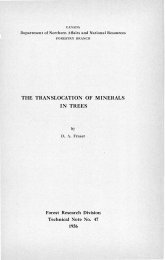
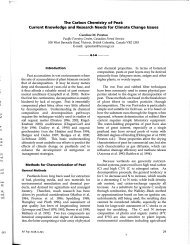


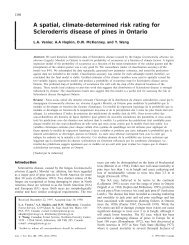

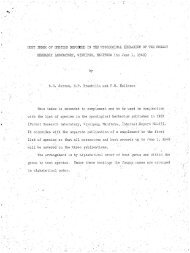
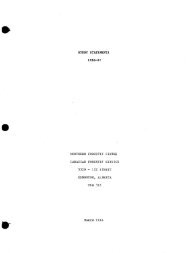
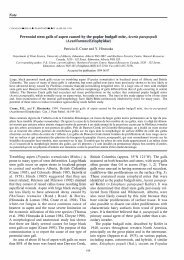
![Po],rell](https://img.yumpu.com/11946277/1/190x231/porell.jpg?quality=85)
